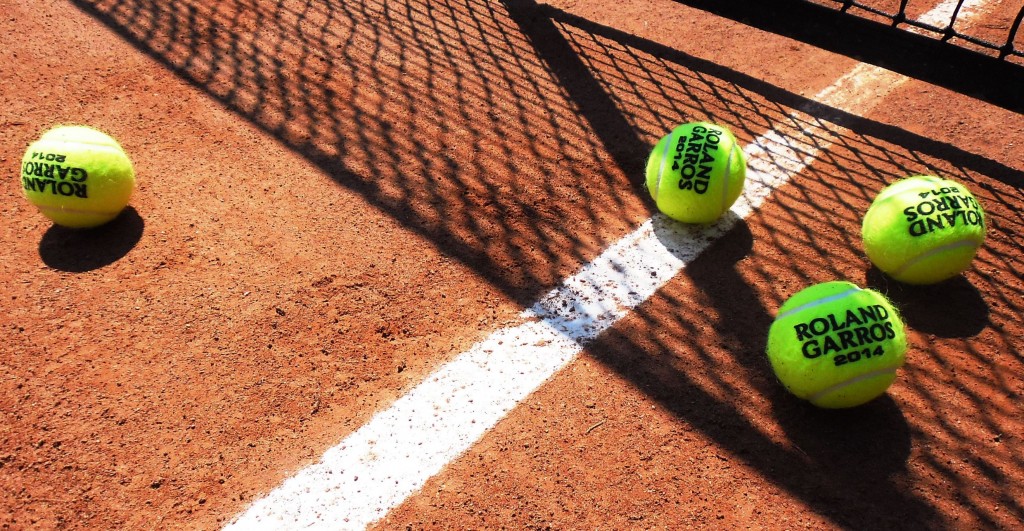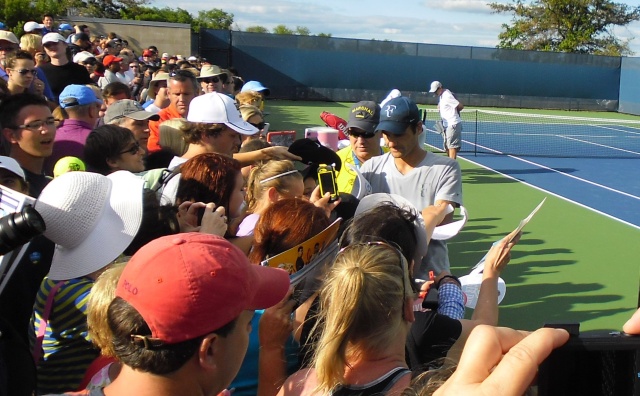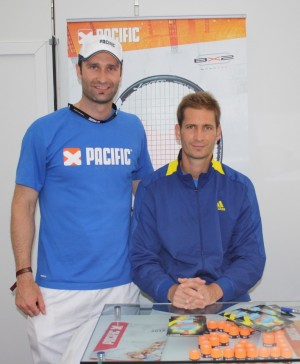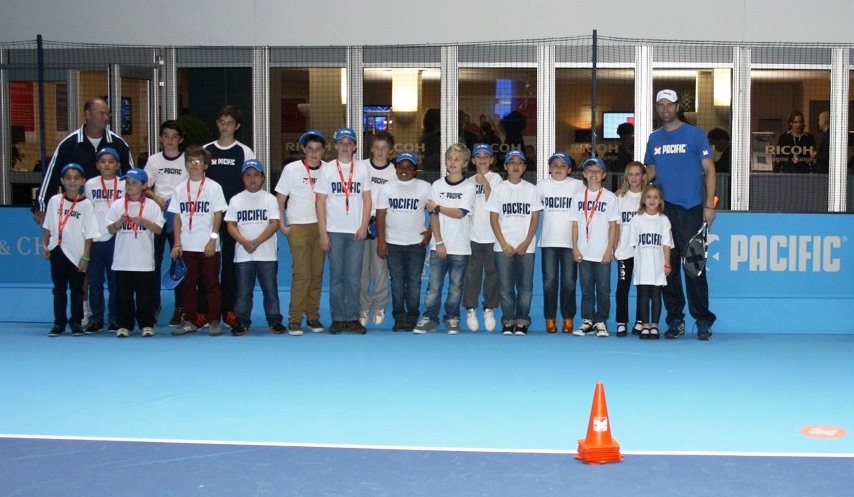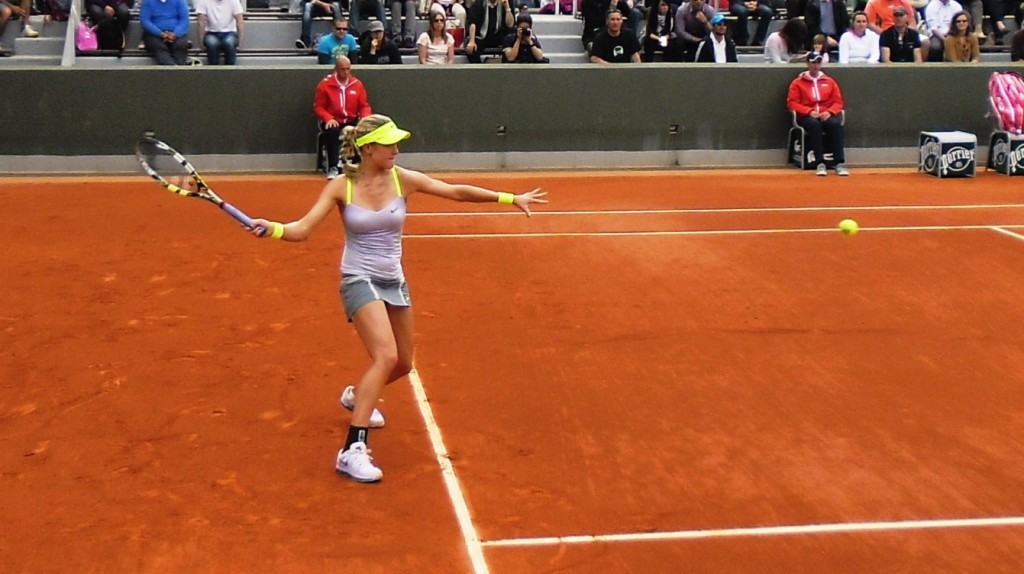I adore watching qualifying rounds at the Slams. Present are players who truly cherish the value of a win, who live in the shadows of the big stars of tennis, and who dream of winning a round just for the chance to advance closer to the main draw, possibly enter the top 100 rankings, and make a decent living. The ranking points and the increase in money prize for each match won mean a lot more to these players then to those who regularly succeed and aim for titles. These men and women watch where they stay, they balance their expenses, and they often share rooms with other players, or even share coaches. Thus, when they win a match and approach one more round to the main draw, you can see the display of sheer exhilaration, and when they lose, the dreadful disappointment. The French Open qualifying rounds offer just that this week at Roland Garros.
It offers several matches around the 3-hour mark. It offers Miloslav Mecir Jr. – the son of Miloslav Mecir Sr. who reached the finals of two Slams in the late 80s – who collapses to his knees and kisses the red clay on Court 10 after defeating the American Tim Smyczek to make it to the main draw of a Slam for the first time in his career. He happily emphasizes later to another coach that it is only his third Slam. He deserves to boast, especially after winning his previous round in a 3-hour-and-5-minutes battle, less than 24 hours prior to defeating the American. He is tired but he is content. Then, there is the victory t-shirt strip of Laurent Lokoli, the 19-year-old Frenchman, when he wins three thrilling matches in a row to unexpectedly make it to the main draw in the tournament where he watched his heroes perform since his childhood. Yes, he deserves to hear the roar of the French crowd when he wins the match point, strips his shirt off and celebrates in pure joy. There is also Cagla Buyukakcay who has yet to make it to the main draw of a Slam and never entered the top 100 in the WTA rankings. Yet she spent a grueling total of 5 hours and 42 minutes in her first two rounds combined, just to reach the final round of qualifying. She screams loud when her opponent misses a backhand in the net, because it signaled the end of a match that lasted over 3 hours, and in which she needed 9 match points to overcome the experienced Italian Alberta Brianti. She needed some recovery massages and a check-in with the physio, but she is ready for her match tomorrow. You admire Brianti just as much, who, in her loss, fought cramps and murmured to herself at one point that she would either “die on the court or win the match.”
The casual tennis fans may have never heard of these names, yet the game of tennis knows no distinction between stars and lower-ranked laborers. It demands the same commitment from any competitor who seeks to improve. “Making it” certainly means more to these players then the top stars – albeit the latter did have to go through these steps themselves at some point.
That is what the qualifying rounds offer. There is no place better than the Slams to appreciate the hard work of tennis players. The French crowd fills the outside courts despite the considerable entry fee (for example, the US Open qualifying rounds are free to the public) and gets involved in the matches. It is one dramatic duel after another, and one thrilling outcome following another. Yes, I am looking forward to the main draw and the fantastic skill level of the higher-ranked players. Yes, I am ready to watch the magical play and the superior athleticism of top champions like Rafael Nadal, Li Na, Novak Djokovic, Roger Federer, and Serena Williams. Yet, I realize once again that the qualifying rounds offer just as much entertainment, if not more emotions, to the tennis-lover in me.
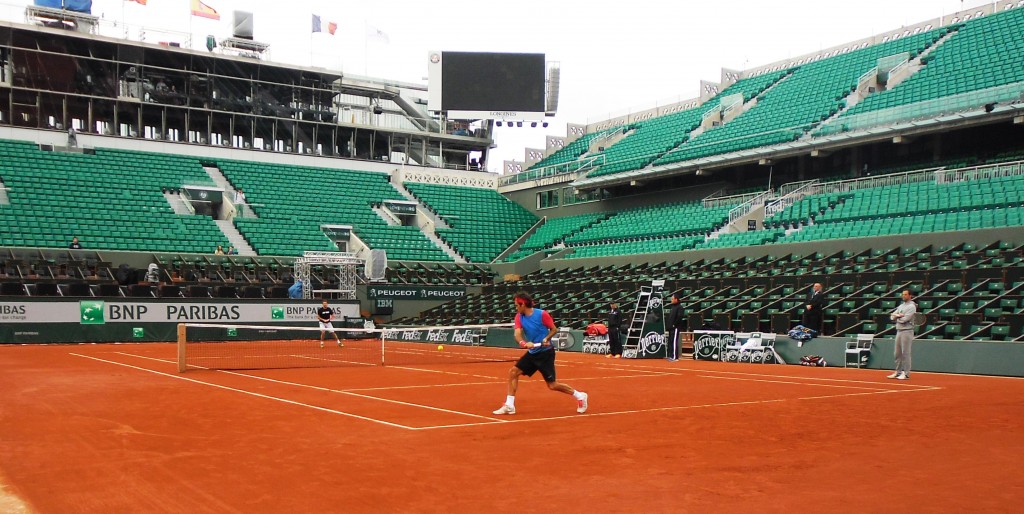 For good measure, you can also catch the superstars in action, such as Roger Federer & Stanislas Wawrinka pictured above during this morning’s practice session on Philippe Chatrier Court.
For good measure, you can also catch the superstars in action, such as Roger Federer & Stanislas Wawrinka pictured above during this morning’s practice session on Philippe Chatrier Court.
Stay tuned for Mertov’s Tennis Desk Roland Garros updates, and look for more updates on Twitter

